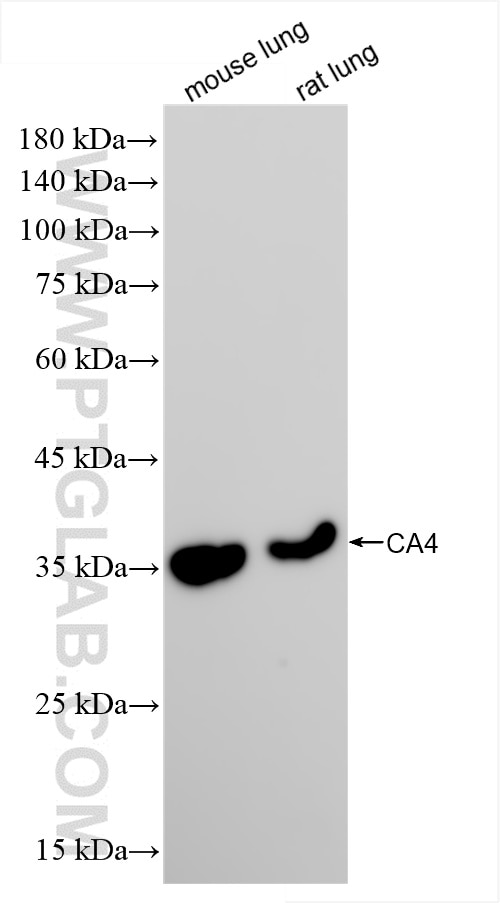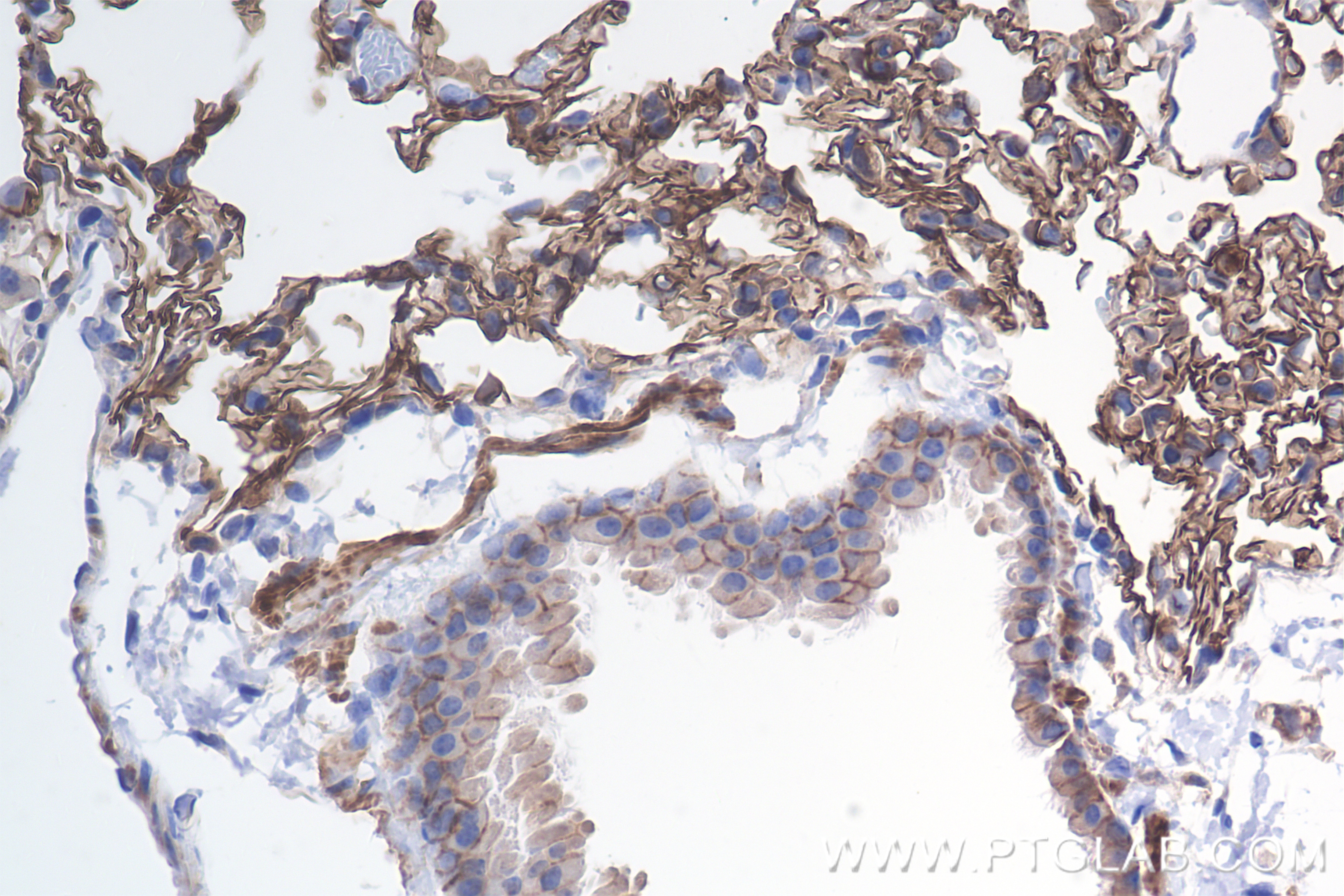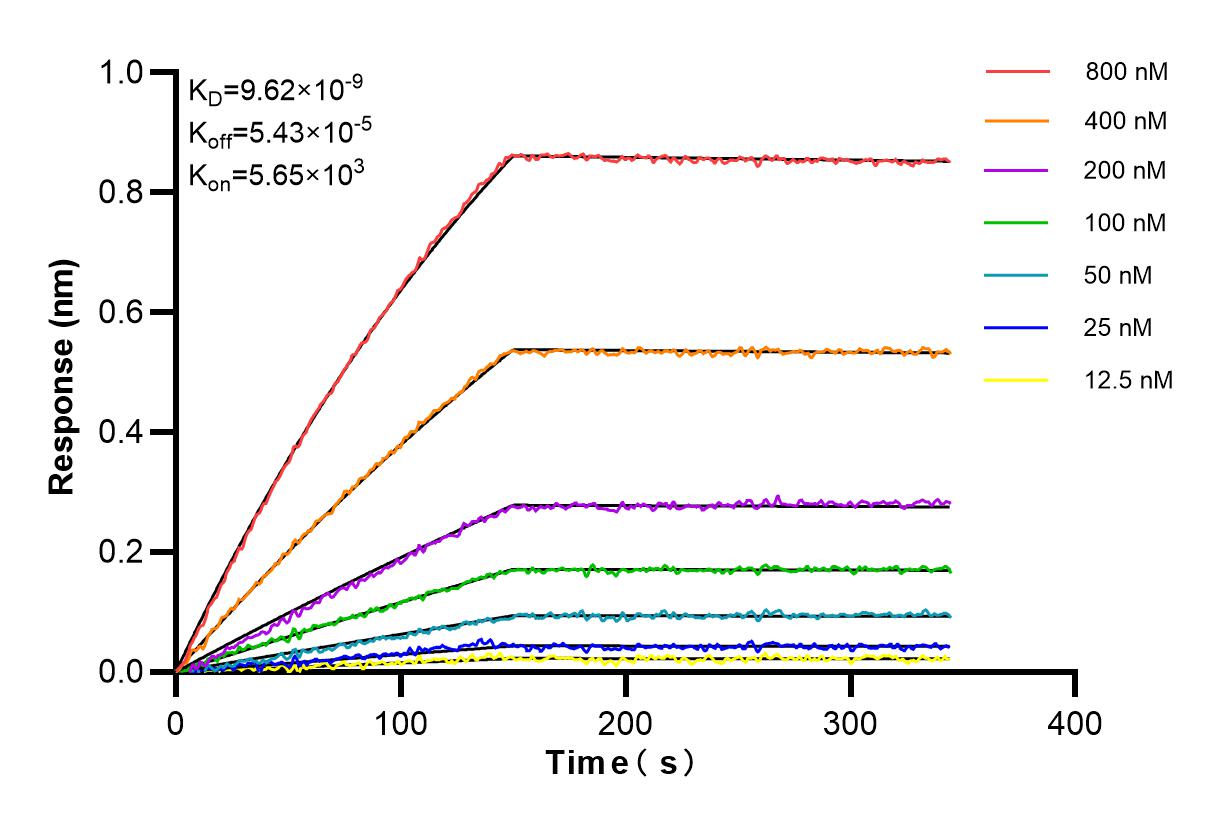Tested Applications
| Positive WB detected in | mouse lung tissue, rat lung tissue |
| Positive IHC detected in | mouse lung tissue Note: suggested antigen retrieval with TE buffer pH 9.0; (*) Alternatively, antigen retrieval may be performed with citrate buffer pH 6.0 |
Recommended dilution
| Application | Dilution |
|---|---|
| Western Blot (WB) | WB : 1:5000-1:50000 |
| Immunohistochemistry (IHC) | IHC : 1:500-1:2000 |
| It is recommended that this reagent should be titrated in each testing system to obtain optimal results. | |
| Sample-dependent, Check data in validation data gallery. | |
Product Information
85706-1-RR targets Carbonic Anhydrase 4/CA4 in WB, IHC, ELISA applications and shows reactivity with human, mouse, rat samples.
| Tested Reactivity | human, mouse, rat |
| Host / Isotype | Rabbit / IgG |
| Class | Recombinant |
| Type | Antibody |
| Immunogen | Carbonic Anhydrase 4/CA4 fusion protein Ag4960 Predict reactive species |
| Full Name | carbonic anhydrase IV |
| Calculated Molecular Weight | 35 kDa |
| Observed Molecular Weight | 35 kDa |
| GenBank Accession Number | BC057792 |
| Gene Symbol | CA4 |
| Gene ID (NCBI) | 762 |
| Conjugate | Unconjugated |
| Form | Liquid |
| Purification Method | Protein A purification |
| UNIPROT ID | P22748 |
| Storage Buffer | PBS with 0.02% sodium azide and 50% glycerol, pH 7.3. |
| Storage Conditions | Store at -20°C. Stable for one year after shipment. Aliquoting is unnecessary for -20oC storage. 20ul sizes contain 0.1% BSA. |
Background Information
CA4(Carbonic anhydrase 4) is a glycosylphosphatidyl-inositol-anchored membrane isozyme expressed on the luminal surfaces of pulmonary, chorionic (and certain other) capillaries and of proximal renal tubules. It plays a critical role by maintaining the pH in the outer retina, which is important for the normal function of photoreceptors. This protein belongs to the alpha-carbonic anhydrase family.
Protocols
| Product Specific Protocols | |
|---|---|
| WB protocol for Carbonic Anhydrase 4/CA4 antibody 85706-1-RR | Download protocol |
| IHC protocol for Carbonic Anhydrase 4/CA4 antibody 85706-1-RR | Download protocol |
| Standard Protocols | |
|---|---|
| Click here to view our Standard Protocols |







